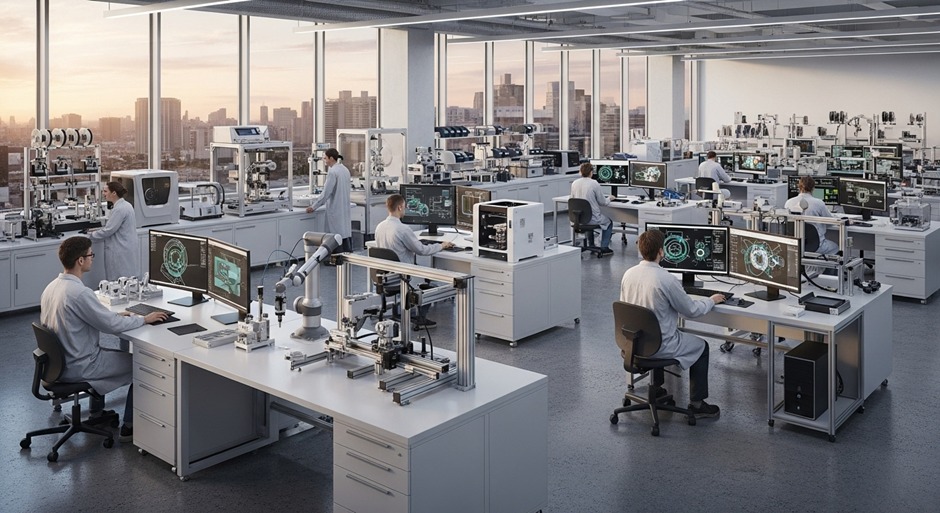Sustainability, safety, and precision have become central priorities across industries. From healthcare to manufacturing and energy production, businesses are under constant pressure to reduce waste, lower emissions, and create safer environments. This growing demand has given rise to Clean Engineering — a discipline dedicated to developing environmentally friendly, efficient, and contamination-free processes.
Clean engineering is not just a technical approach; it represents a philosophy of progress that balances industrial growth with responsibility toward people and the planet. By designing cleaner technologies, optimizing production systems, and minimizing environmental impact, clean engineering helps industries prepare for a future where sustainability is non-negotiable.
What is Clean Engineering?
Clean engineering is the practice of applying advanced technologies, designs, and processes to reduce pollution, energy consumption, and contamination in industrial and research environments. It includes the development of clean rooms, purification systems, renewable energy solutions, and eco-friendly manufacturing practices.
The discipline also overlaps with areas like green building design, waste management, and water purification. Essentially, clean engineering is about finding smarter, cleaner, and more sustainable ways to achieve industrial goals while protecting both human health and the environment.
Importance Across Industries
Clean engineering is transforming multiple industries:
1. Pharmaceuticals and Healthcare
In drug production and medical device manufacturing, contamination can pose serious risks to patient safety. Clean engineering ensures sterile facilities, purified water systems, and controlled environments that meet strict global standards.
2. Electronics and Semiconductors
Dust or micro-contaminants can destroy delicate microchips. Clean engineering designs highly controlled environments that protect components and improve product reliability.
3. Energy and Environment
From renewable energy infrastructure to carbon capture technologies, clean engineering supports the transition to low-carbon, eco-friendly energy systems.
4. Food and Beverage
Clean water, sterile air, and contamination-free production lines are essential to consumer safety. Clean engineering provides solutions that safeguard food quality and extend shelf life.
5. Aerospace and Precision Manufacturing
In aerospace and advanced manufacturing, even microscopic impurities can affect performance. Clean engineering solutions ensure that production processes achieve the highest standards of precision and reliability.
Core Principles of Clean Engineering
The strength of clean engineering lies in its integration of science, technology, and sustainability. Its principles include:
- Pollution Prevention: Designing systems that minimize emissions, effluents, and waste.
- Energy Efficiency: Using renewable sources, smart HVAC systems, and energy-optimized processes.
- Resource Optimization: Reducing raw material consumption and promoting recycling or reuse.
- Contamination Control: Implementing air filtration, pressure control, and purification systems.
- Sustainability: Ensuring processes not only meet current standards but also align with long-term environmental goals.
Technologies in Clean Engineering
A wide range of technologies form the backbone of clean engineering practices:
- HEPA and ULPA Filters: Remove airborne particles in clean rooms and sterile facilities.
- Reverse Osmosis & UV Sterilization: Ensure purified water for pharmaceutical and industrial use.
- IoT and AI Monitoring: Enable real-time tracking of energy use, emissions, and contamination.
- Renewable Energy Systems: Integration of solar, wind, and bioenergy into industrial processes.
- Modular Construction: Prefabricated clean rooms and purification units allow quick installation and scalability.
These technologies ensure industries can comply with regulations while also reducing operating costs and improving efficiency.
Standards and Compliance
Global organizations enforce strict rules to ensure clean engineering practices are consistent and effective. Some key frameworks include:
- ISO 14644 for clean rooms and controlled environments.
- Good Manufacturing Practices (GMP) for pharmaceuticals and healthcare.
- Environmental Protection Agency (EPA) regulations for air and water quality.
- International Energy Standards guiding efficiency and emissions reductions.
Adhering to these standards ensures industries maintain credibility while meeting safety and environmental obligations.
Future of Clean Engineering
The future of clean engineering is deeply tied to innovation and sustainability. Emerging trends include:
- Smart Clean Systems
Integration of AI, robotics, and IoT for self-regulating clean rooms and automated contamination control. - Green Materials
Development of recyclable, non-toxic, and low-emission materials for construction and manufacturing. - Carbon-Neutral Facilities
Designing buildings and industrial plants that run entirely on renewable energy. - Advanced Filtration and Purification
Nanotechnology-driven filters capable of eliminating the smallest pollutants. - Global Collaboration
Shared best practices and international partnerships will drive cleaner industrial development worldwide.
Choosing the Right Clean Engineering Partner
For businesses, selecting the right partner in clean engineering is critical. The ideal provider should offer:
- Proven expertise across multiple industries.
- Tailored solutions that meet unique operational needs.
- Strong focus on compliance and regulatory requirements.
- Innovation-driven designs for future readiness.
- Comprehensive after-sales support and training.
The right partnership ensures not only compliance but also improved efficiency and competitive advantage.
Conclusion
As industries face increasing pressure to deliver sustainable and high-quality outcomes, Clean Engineering is emerging as a cornerstone of progress. By combining advanced technology with environmental responsibility, it empowers companies to minimize risks, optimize performance, and prepare for a cleaner future.
From pharmaceuticals to aerospace, clean engineering protects products, people, and the planet. With innovations on the horizon, it will continue to shape safer, more efficient, and sustainable industries worldwide.

